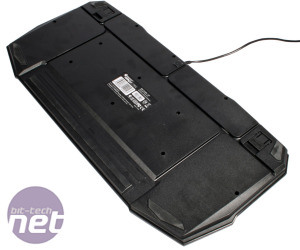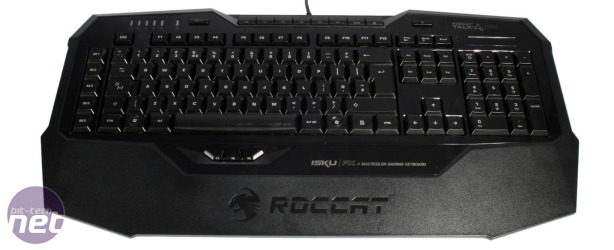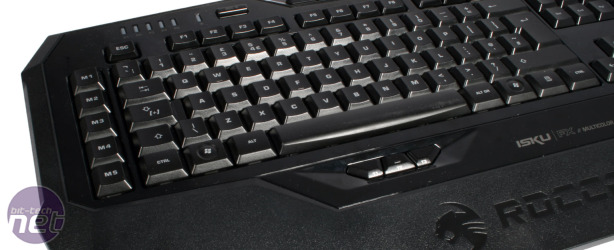
Roccat Isku FX Review
Manufacturer: RoccatUK price (as reviewed): £79.99 (inc VAT)
US price (as reviewed): $109.99 (ex Tax)
Mechanical keyboards are all the rage in the high-end sector of the market these days, with the likes of the Corsair K60 and Ozone Stike focussing on build quality and a smooth typing experience over fancy extras likes LCD screens. The ultimate expression of this is the Filco Majestouch 2, which makes up for its lack of bells and whistles by being built like a boulder and its full array of Cherry MX red switches, but it carries a hefty £130 price tag to match.
German peripherals specialist Roccat has never really been one for minimalism, as the feature rich Kone series (Kone+, Kone XTD) of mice - and even the company's website - will attest to. Even its upcoming range of Ryos mechanical keyboards are set to debut with a whole host of features to play with, and that's also the case with the keyboard we're looking at here, the £80 membrane-based Roccat Isku FX.
The last non-mechanical keyboard we looked at here was in fact this model's ancestor, the Isku. We weren't exactly fans of it then, so it's a shame to note that little other than the backlight system has undergone any real change. Therefore, while Roccat is no stranger to the premium peripheral market, we have to wonder whether any number of features will make up for its poorer quality keys compared to the cheaper mechanical offerings that can be had for a similar price.
Roccat Isku FX design
As before, the Isku FX makes clear its gamer aesthetic with an angular design and a two tone black finish. Glossy black plastic forms the central portion of the board; a less than ideal choice for a keyboard given its propensity to pick up marks and scratches. The outside edging and the wrist rest, which can't be removed, are formed from a lighter and more textured plastic. This reliance on a plastic rather than a metal chassis means that again the keyboard is relatively easy to flex and bend, although admittedly it only flexes during actual use if you type with a force comparable to The Hulk.
Flipping the board over reveals some handy cable channels and a pair of plastic feet at the rear, which are locked in place firmly. The cable emerging from the board sadly isn't braided, but the plug that it ends in has the keyboard's name and logo printed on it, which could at least be useful if you're trying to identify it among others at the back of your PC.
The extra macro keys are sensibly placed and not overcrowded, with five lining the left side and three “Thumbster” buttons below the spacebar in a similar fashion to those on the Razer Anansi. These Thumbster keys don't hinder normal typing in any way but are well placed for quick access in gaming sessions. Eight media keys can be found along the top edge, while a macro recording button and a backlight illumination one are placed to the left and right of these respectively.
Roccat's Easy-Shift functionality also returns in the Isku FX, and is set by default to the Caps lock key. It essentially graces a certain set of keys with a second, programmable function when it's held down. While the Scroll and Num lock lights act as you'd expect, the Caps lock light will also flash to indicate that Easy-Shift is active.


Click to enlarge - Roccat's keyboard has cable channeling on the rear and customisable RGB backlighting for the keys
The final hardware based feature of note is the backlighting system, which can now be set to any one of 16.8 million colours thanks to the use of RGB LEDs. Thankfully it no longer renders the symbol characters illegible, and with five brightness levels and an off state it's easy to find a settings that works. Annoyingly, certain lights like the profile light, macro record light and those on the thumb buttons use solely blue LEDs, which does somewhat spoil the effect if you're going for a consistent look.
Naturally, you're able to simply plug the keyboard in and use its basic functionality. However, you don't buy a keyboard like this for basic functionality, so you'll need to grab the latest version of the board's software from Roccat's website to get the most out of it. Here you'll also find unofficial community based support for Linux users.

MSI MPG Velox 100R Chassis Review
October 14 2021 | 15:04










Want to comment? Please log in.